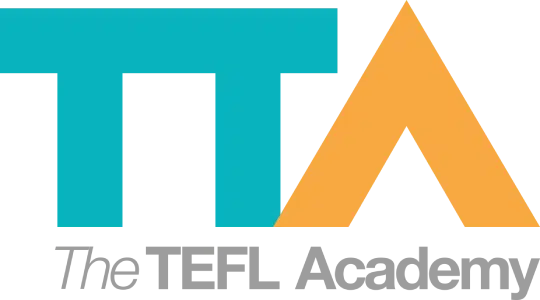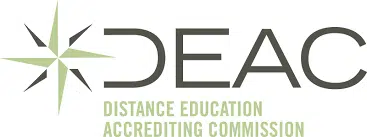Teacher’s Toolkit: Mastering The Past Simple Tense: Rules, Pronunciation & Classroom Activities
Join a global community of over 200,000 TEFL teachers working throughout the world! Enrol me!
The past simple tense often seems straightforward — until pronunciation and irregular forms complicate things. This post simplifies those hurdles, laying out clear rules, meaningful practice ideas, and engaging classroom activities.
What is the past simple tense?
Use the past simple to describe events that happened once, repeatedly, or at a specified time in the past.
Examples:
- I left school in 1989.
- We ate a lot on holiday.
- I lived in Spain for 2 years.
We can also use the word ago with past tense phrases.
- It happened a long time ago.
Questions and negatives
For forming questions and negatives, use did…
Did you see that car? Did you live in Sapin a long time ago? Did she pass her exams?
… and didn’t (did not).
We didn’t go on holiday this year. I didn’t call her yesterday.
Some TEFL students may get confused and wonder why do or did isn’t used in every wh- question.
If there’s already an auxiliary verb or a modal in the question, we use that instead of do/did.
- How much does the watch cost?
- When will your sister get home?
If there’s no auxiliary verb, that’s when we use do or did.
- When did you arrive?
- Where do you work?
Regular and irregular verbs in the past tense
The regular verbs of the past simple are formed by adding -ed.
Play becomes played.
Like becomes liked.
Irregular verbs don’t follow the regular -ed pattern.
Examples:
Do becomes did.
Eat becomes ate.
💡 Tip: If you’re teaching TEFL students as beginners, start off teaching the past simple tense with irregular verbs.
One of the most – if not the most – common irregular verb is the verb to be. The past tense of to be is was.
Other irregular verbs include:
- be – was
- become – became
- can – could
- do – did
- eat – ate
- get – got
- go – went
- have – had
- leave – left
- make – made
- say – said
- sit – sat
- tell – told
- write – wrote
Past simple tense pronunciation in English
Although regular verbs add -ed, their pronunciation differs depending on the final sound.
Consider the following sentences:
- Yesterday I asked my teacher a question.
- Last week I played football with my friends.
- My mother suggested I go to London to study English.
There are three regular past simple verbs in the sentences, and their endings are all pronounced differently. This can be problematic for English language learners because it seems like you cannot know how to pronounce a word by looking at it.
But you can.
If the verb ends in /t/ or /d/, the past simple ending is pronounced /Id/.
Examples: wanted, ended
If the verb ends in a voiceless sound, such as /p/, /f/, /s/, /ʃ/, /ʧ/ or /k/, the past simple ending is pronounced /t/.
Examples: stopped, washed
If the verb ends in another voiced sound, the past simple ending is pronounced /d/.
Examples: played, allowed
Recognising these patterns enables students to pronounce past tense forms accurately, even when writing doesn’t reveal the pronunciation.
💡 Tip: Pronunciation of the regular past simple endings can be tricky for lower-level learners, but if they notice the patterns, it becomes easier to remember. A useful approach is to use categorisation (learners must put words into correct categories) and guided discovery activities.
Teaching strategies and classroom activities
Categorisation and guided discovery — regular verbs
Give students cards with the present tense stem of regular verbs. On the board, draw three columns for the different endings: /t/, /d/, and /ɪd/.
Make sure your students understand the IPA symbols.
Students struggle so much with pronunciation because English is not a phonetic language. – Amanda, TEFL teacher & TTA alumna
Ask them to place each verb in the column where they think it belongs, without any hints from you. When they’re done, tell them how many are incorrect, but not which ones, and let them try again.
Once they’ve correctly sorted the verbs, ask them to look for patterns and work out the pronunciation rules for each ending themselves.
This method enhances retention and empowers learners to internalise pronunciation rules through active discovery.
Memorisation and practice — irregular verbs
Irregular verbs don’t follow the -ed pattern, so memorisation is key. Use engaging tools like games, word searches, or interactive worksheets to reinforce learning.
💡 Tip: Your students will find a list of irregular verbs at the back of their coursebook.
Focus early lessons on common irregular verbs, especially to be (e.g., was) and other frequent verbs like do–did, eat–ate, go–went, have–had, say–said, make–made.
Mastering the past simple involves:
- Understanding when to use the tense.
-
- Learning pronunciation rules for regular -ed forms.
- Using discovery-based classroom activities to reinforce those rules.
- Supporting irregular verb retention with creative practice.
Interactive apps and online quizzes
Apps and online quizzes can be effective tools when teaching pronunciation online. It can increase engagement, add an element of fun, and provide instant feedback for teachers and learners.
Don’t spend the whole lesson doing drills, drills, and more drills. Students switch off. Learning needs to feel connected to real life. – Amanda
We all know that real life for most learners includes plenty of social media and gaming, so tapping into those interests can boost motivation.
Read more: How To Teach Pronunciation Online Like A Pro
Many language learning apps like Duolingo and Babbel have modules for past tense practice that give instant feedback, which works great alongside your lessons. With speech recognition, students can practice pronunciation and get quick tips to improve how they sound.
However, a study found that human instruction provides better detailed feedback than apps like Duolingo, so use these apps as a supplement rather than a key teaching tool. Think homework or extra practice.
A well-rounded approach builds both confidence and competence for learners navigating the past simple tense.
Accreditation & Quality Assurance
The TEFL Academy was the world’s first TEFL course provider to receive official recognition from government regulated awarding bodies in both the USA and UK. This means when you graduate you’ll hold a globally recognised Level 3 (120hr) Certificate or Level 5 (168hr) Diploma, meaning you can find work anywhere and apply for jobs immediately.
 United States
US
United States
US












